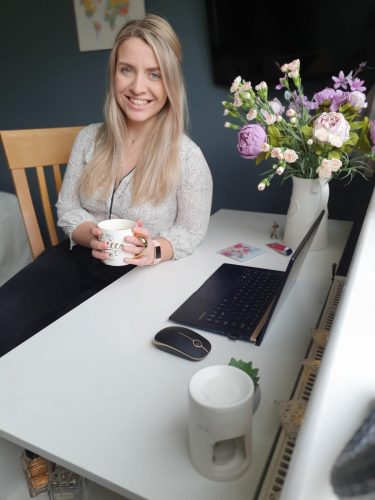4 copywriting tips EVERY marketer should know
When was the last time you actually checked your copywriting? I mean REALLY checked it
Copy is the heartbeat of marketing. It helps you to connect, nurture and convert your leads, so it pays to choose those words carefully.
But whether you’re using it in email, ads, sales pages or social media, sometimes choosing the right words can be the hardest thing.
The amount of content created online has never been higher. A quick google search will tell you we create roughly 2.5 quintillion bytes of data every single day (Even if maths isn’t your strong subject, you can probably see that is pretty huge).
➡️In the hope to keep up with the ever increasing demand for more, more, MORE content, you may have put quality copywriting to one side.
So in this blog, I’m giving you 4 of my favourite copywriting skills that you can weave into any piece of writing and take customers from thinking “ok” to “where do I pay?!”

Use the you/your technique
My favourite copywriting hack and one that is so simple to implement is the you/your trick. It’s as simple as checking that anything you write is addressing the reader directly, rather than talking about yourself or about some vague third person (i.e. “people” or “an entrepreneur”)
Go through your last piece of writing and check how many times you use “you/your,” vs how many times you use “we, my, I,” or the third person. I can guarantee that unless you have actively noted this trick, you will find way fewer “you/yours” in any sales or marketing copy.
Don’t worry, this is so common, especially talking about your offers or services, because, well, they are yours! But in good copywriting, you want the reader to sit up and understand why this is relevant to them, so talking about what you have isn’t going to have anywhere near as much impact as talking about them.
That being said, making sure your voice and story are weaved through are still key, but check each sentence always brings your reader back into the spotlight.
Use the language your audience uses
Remember reaching for a thesaurus at school, trying to get the most impressive words to use in your essays?
Great copywriting can mean the biggest words aren’t always the most effective. In fact one of my favourite copy tricks, making its way to this blog here, is using the language of your audience to build a connection.
This trick is backed by a little bit of psychology. When you read something that uses the language you do, you’re more likely to feel as though you and your challenges are understood by the writer. You’ll find it easier to trust those who can connect with your situation, and become more receptive to the things they say.
Listening to your audience is key here, and your market research will be a fantastic source of help. Remember, when you’re asking questions, don’t just focus on your client’s answers, focus on the way they answer and the words they use.

Talk about the transformation NOT the process
A common copywriting mistake is to use the perfect words, but talk about the wrong thing. When you’re passionate about your product, it’s easier to focus on how it works rather than what it provides. Your online course may be filled with hundreds of resources and 20+ hours of video footage, but if your client’s don’t understand what they’re getting out of it, what they’re learning and how it will change their life, you may as well present them with a black canvas.
Try talking about the transformation, or what your clients will get once they’ve finished using your product or service. Ask yourself:
> How will your client feel?
> What will their life look like?
> Which problems are no longer a concern?
That’s the difference between good copywriting and great.
Appeal to your client’s emotions
We’re far less logical than we’d like to think.
Despite consciously believing that we decide to purchase by weighing up the features, functionality and price of the product or service, most of the time that’s not really the reason we decide to buy.
We are more likely to choose something based on subconscious feelings or emotions and so understanding how to generate an emotional connection between your ideal client and your brand can seriously change your marketing game.
This can include:
- Your messaging and how this drives emotions
- Your colours and how they evoke a feeling
- The customer service experience you create





